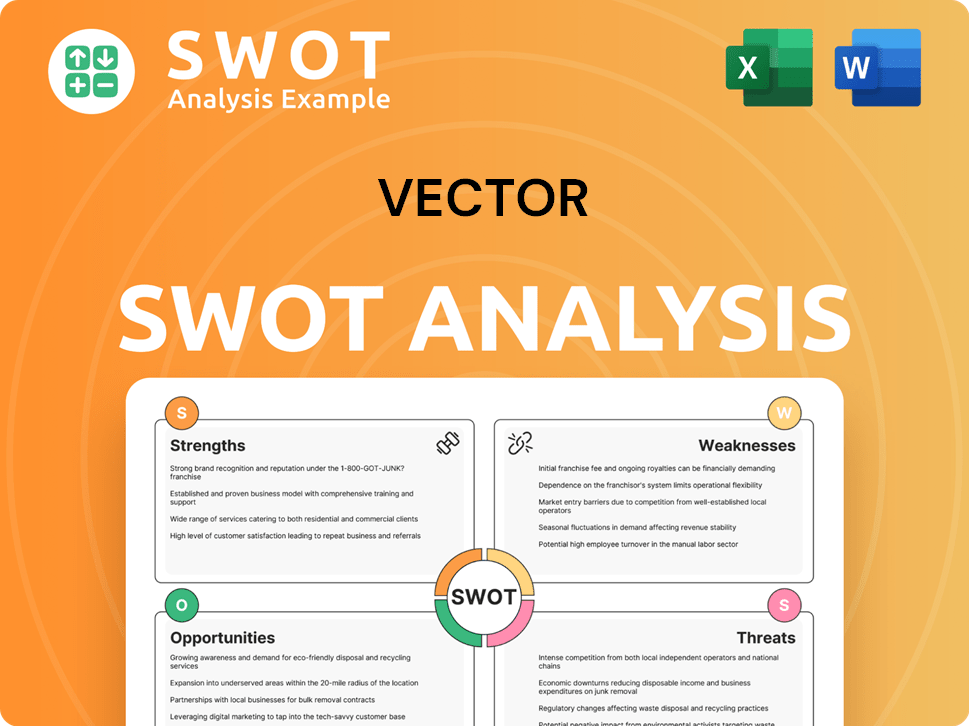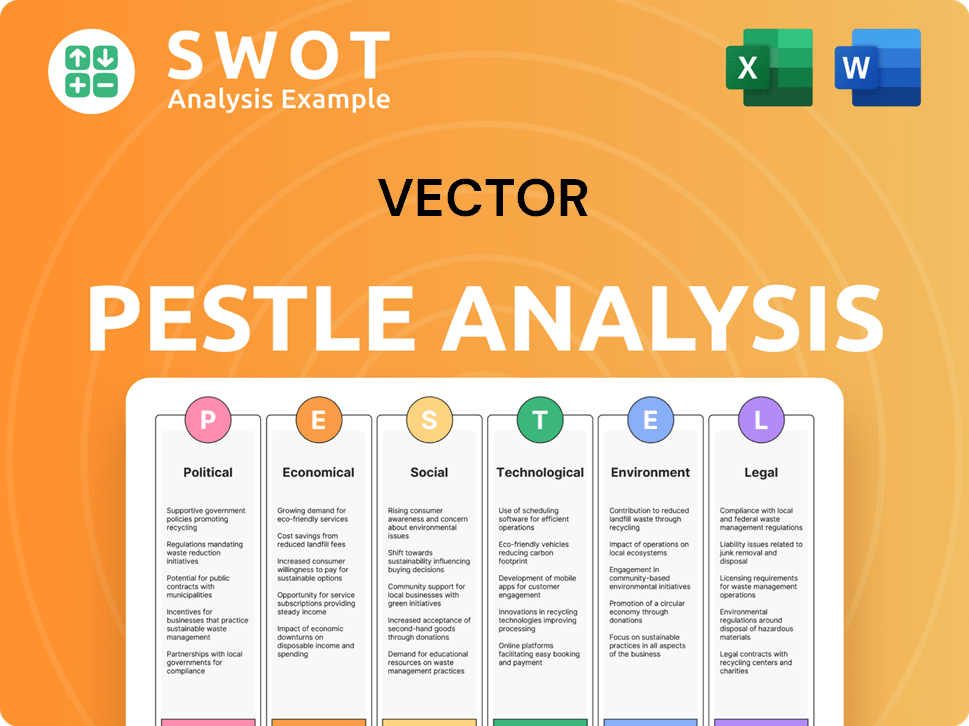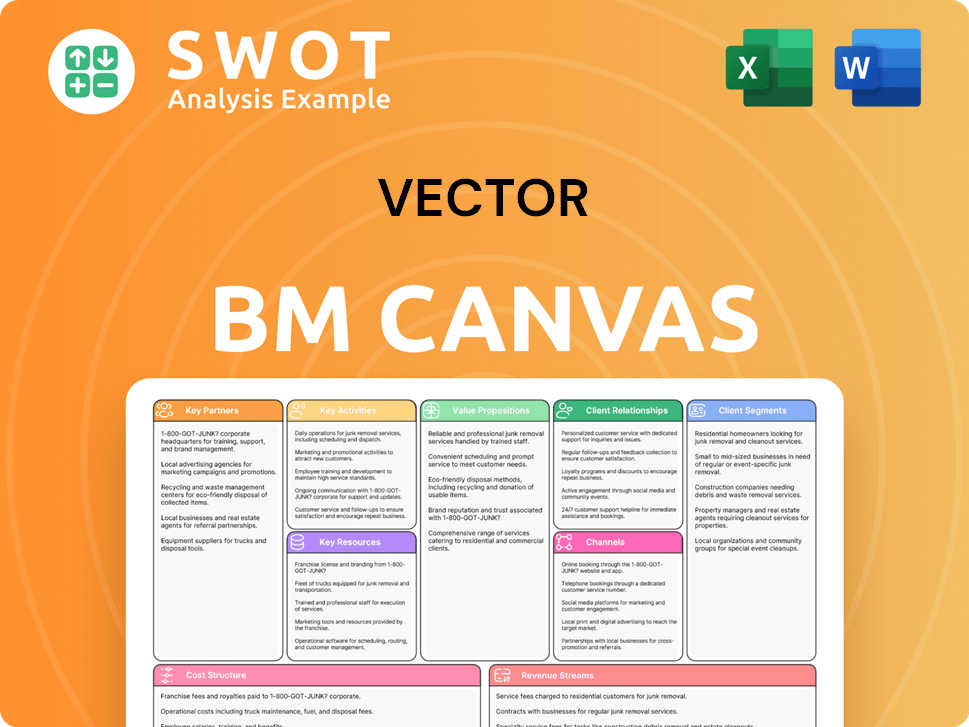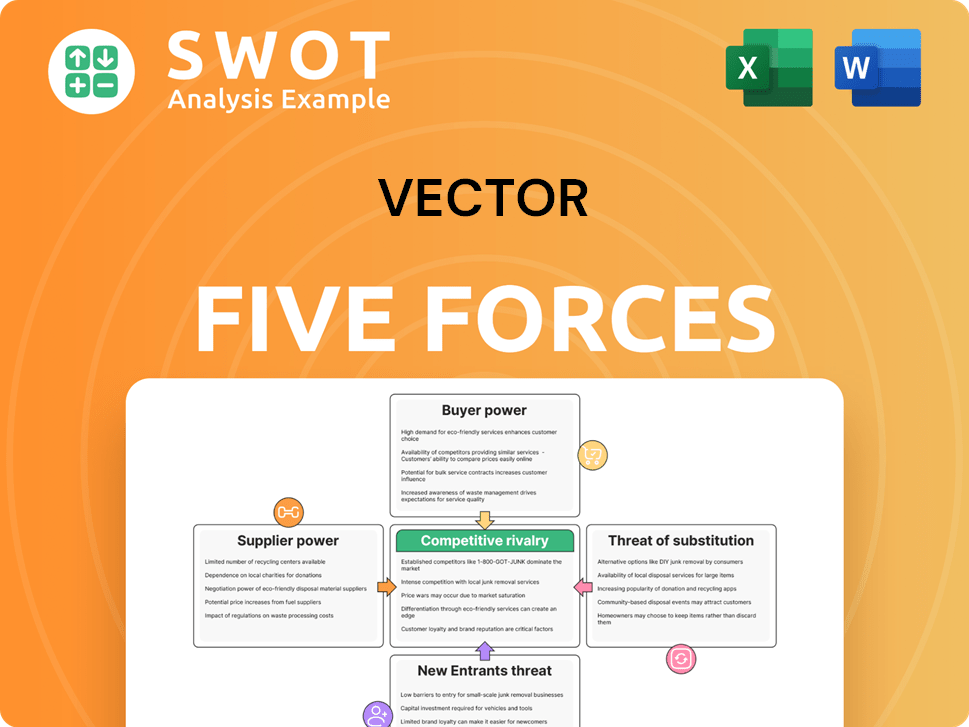Vector Bundle
How is Vector Company Redefining Energy Solutions?
Vector Limited, a New Zealand powerhouse, is revolutionizing its Vector SWOT Analysis, sales and marketing strategy. This evolution is critical in today's dynamic energy landscape, shaped by decarbonization and evolving customer expectations. Vector's journey showcases a shift from traditional utility models to a customer-focused, digitally-driven approach, making it a compelling case study for any business strategist.

This article explores Vector Company's innovative sales and marketing strategies, examining how they navigate a competitive market. We'll dissect their sales process, marketing plan examples, and customer acquisition strategies, providing insights into their success. Furthermore, we'll analyze their digital marketing strategies, brand-building efforts, and competitive analysis to understand their position in the market. Understanding Vector's business strategy offers valuable lessons for businesses seeking to adapt and thrive in rapidly changing industries, especially regarding sales and marketing alignment.
How Does Vector Reach Its Customers?
The sales and marketing strategy of Vector Company is multifaceted, reflecting its diverse operations in electricity, gas, and telecommunications. The company employs a combination of direct customer relationships, specialized business units, and strategic partnerships to reach its target markets. This approach allows Vector to serve a wide range of customers, from residential consumers to large businesses, with tailored solutions.
Vector's sales channels are designed to support both its traditional utility services and its newer ventures in technology and energy solutions. The company's focus on digital transformation and strategic asset management further shapes its sales strategy. Recent divestments, such as the sale of Vector Ongas, demonstrate a strategic shift towards core competencies and emerging opportunities.
As of December 31, 2024, Vector managed over 628,990 electricity connections and 120,761 gas connections, primarily through direct customer relationships. This foundational customer base is crucial for the company's sales and marketing efforts.
Vector's primary sales channel involves direct customer relationships for electricity and gas distribution, serving a large customer base. This includes managing connections, providing services, and maintaining the network. The company focuses on ensuring efficient and reliable service delivery to retain and grow its customer base.
Vector Fibre builds, monitors, and maintains its own fiber network, targeting businesses that require high-speed and secure data networks. This channel focuses on direct sales to businesses, offering tailored solutions to meet their specific needs. The company emphasizes the reliability and security of its fiber network to attract customers.
VTS develops market-ready digital solutions for the energy infrastructure sector, likely involving direct sales to businesses and partnerships. This channel focuses on offering innovative solutions to improve energy infrastructure. The company aims to establish itself as a leader in the energy technology market.
The HRV business, focusing on home ventilation, heating/cooling, and water filtration systems, as well as electric vehicle charging, likely uses a mix of direct sales teams and partner retailers or installers. This channel targets residential customers across New Zealand. The company leverages multiple channels to reach its target audience effectively.
Vector's sales and marketing strategy is evolving to meet the changing demands of the energy sector. The company is embracing digital technology to provide customers with more choices and efficient options across its network. The strategic asset sales, such as the sale of its natural gas trading business contracts to Nova Energy Limited on July 1, 2024, and the conditional sale of Vector Ongas and its shareholding in Liquigas, which was completed on January 31, 2025, indicate a strategic focus on core regulated networks and new energy solutions.
- Vector is investing in digital technology to enhance customer experience and provide more energy usage choices.
- The company is strategically divesting non-core assets to focus on its core regulated networks and new energy solutions.
- Vector's investment in Bluecurrent continues to perform within its expected range, diversifying its portfolio.
- The company's approach to Brief History of Vector shows how they are adapting to market changes.
Vector SWOT Analysis
- Complete SWOT Breakdown
- Fully Customizable
- Editable in Excel & Word
- Professional Formatting
- Investor-Ready Format

What Marketing Tactics Does Vector Use?
The company, known as Vector, employs a multifaceted marketing strategy to enhance brand visibility, attract potential customers, and boost sales across its energy and communication services. Their approach is increasingly centered on digital tactics, reflecting a strong emphasis on innovation and digitalization. This includes leveraging advanced technologies like Microsoft Azure and Kubernetes to streamline operations and improve customer experiences.
Vector uses its official website, vector.co.nz, as a central hub for disseminating crucial information, such as investor reports and annual reports. This serves as a primary digital touchpoint for stakeholders and customers. The company’s dedication to data-driven marketing is evident through projects like PRISMED, which aims to optimize network design and provide immediate feedback on capacity constraints, ultimately benefiting consumers.
The company also explores the use of AI to improve its electricity network, indicating an investment in advanced analytics for operational efficiency and potentially predictive maintenance. This focus on innovation and technological advancement is a key component of their overall marketing and sales strategy.
Vector heavily utilizes digital channels to build awareness and generate leads. This is crucial for a modern marketing strategy. Digital efforts are aligned with its innovation and digitalization focus.
The official website, vector.co.nz, serves as a central hub for information. It provides key reports and updates for stakeholders. This is a primary digital touchpoint for customers.
Projects like PRISMED demonstrate Vector's data-driven marketing approach. These initiatives aim to optimize network design and improve efficiency. This benefits consumers through reduced costs and increased reliability.
Vector is exploring the use of AI to improve its electricity network. This includes using AI to spot wear and tear on power poles. This improves operational efficiency and reliability.
Partnerships with global tech companies are a significant part of Vector's marketing narrative. These partnerships showcase a commitment to innovation. This helps to build a new energy future.
Vector engages in community outreach through initiatives like Vector Lights. This enhances brand visibility and community engagement. This also supports a commitment to sustainability.
Vector's marketing strategy combines digital tactics, data-driven projects, and strategic partnerships to build awareness and drive sales. The company focuses on innovation and community engagement.
- Digital Marketing: Utilizing the official website and advanced technologies.
- Data Analytics: Implementing projects like PRISMED to optimize network design.
- AI Integration: Exploring AI for network maintenance and operational efficiency.
- Strategic Partnerships: Collaborating with global tech companies to showcase innovation.
- Community Engagement: Participating in initiatives like Vector Lights to enhance brand visibility.
- Sustainability Focus: Highlighting a commitment to sustainability in communications.
Vector PESTLE Analysis
- Covers All 6 PESTLE Categories
- No Research Needed – Save Hours of Work
- Built by Experts, Trusted by Consultants
- Instant Download, Ready to Use
- 100% Editable, Fully Customizable

How Is Vector Positioned in the Market?
The brand positioning of Vector Company centers on innovation and leading the energy sector's transformation towards a new energy future. This positioning emphasizes value, choice, and service for customers across New Zealand, alongside sustainable shareholder returns. Vector Company aims to be seen as a forward-thinking utility, committed to a sustainable future.
Vector Company differentiates itself through smart innovation, digital platforms, and global technology partnerships. Their focus is on delivering a more efficient, reliable, and safe network while addressing customer affordability. The brand’s approach is designed to resonate with a target audience that values customer choice and decarbonization, especially with the growth of electric vehicles and renewable energy solutions.
Vector Company's brand consistency is maintained across various touchpoints, from its website and investor reports to community initiatives. This consistency reinforces its image as a responsible and progressive corporate citizen. The company's response to shifts in consumer sentiment is reflected in its strategy to embrace digital technology and offer more choices to customers regarding energy usage.
Vector Company prioritizes customer needs by offering choices and focusing on service. This customer-centric approach helps build loyalty and trust. The company's commitment to digital technology and energy usage choices reflects this focus.
Vector Company leverages smart innovation and digital platforms to enhance its services. This includes partnerships with global technology providers. The company is investing in smart grid technologies, with the global smart grid market projected to reach $72.8 billion by 2027.
Vector Company is committed to sustainability and decarbonization, especially with the rise of electric vehicles. This aligns with the growing consumer demand for renewable energy options. The global renewable energy market is expected to reach $1.977 trillion by 2030.
Vector Company actively engages with the community through initiatives like Vector Lights. This demonstrates its commitment to social responsibility. Corporate social responsibility spending is expected to increase, reflecting the importance of community involvement.
Vector Company's brand positioning is built on several key elements that differentiate it in the market. Understanding these elements is crucial for any Competitors Landscape of Vector.
- Innovation: Embracing new technologies and approaches to energy solutions.
- Customer Focus: Prioritizing customer needs and offering choices.
- Sustainability: Committing to environmental responsibility and decarbonization.
- Community Engagement: Supporting community initiatives and demonstrating social responsibility.
Vector Business Model Canvas
- Complete 9-Block Business Model Canvas
- Effortlessly Communicate Your Business Strategy
- Investor-Ready BMC Format
- 100% Editable and Customizable
- Clear and Structured Layout

What Are Vector’s Most Notable Campaigns?
The Vector Company employs a multifaceted approach to its sales and marketing strategy, focusing on community engagement and showcasing its technological capabilities. A key element of this is the Vector Lights project on the Auckland Harbour Bridge. These initiatives aim to enhance brand visibility and connect with the community while subtly highlighting the company's expertise in energy management and smart technology.
These campaigns are designed to boost brand recognition and foster a sense of community. The strategic alliances and innovation projects also serve as essential communication points. These collaborations highlight the company's commitment to digital transformation and creating a new energy future.
The company's strategic partnerships and innovation projects function as crucial communication tools, though they are not traditional product launch campaigns. The PRISMED project, which received funding from the Commerce Commission's Innovation Project Allowance, is another example. This project demonstrates the company's focus on integrating smart meter electricity data to improve network efficiency and benefit consumers.
The Vector Lights project on the Auckland Harbour Bridge is a prominent marketing campaign. It uses dynamic light and sound shows for various events. This includes the New Year's countdown and cultural festivals like Matariki, enhancing brand visibility and community engagement.
The company's collaboration with Amazon Web Services and its contribution to X's Tapestry project are significant. These partnerships position the company as a leader in network management and highlight its commitment to digital transformation and creating a new energy future.
The PRISMED project, funded by the Commerce Commission, showcases the company's focus on innovation. It involves integrating smart meter data to enhance network efficiency and benefit consumers. Public announcements about such projects demonstrate the company's dedication to a sustainable energy future.
The company's marketing efforts often combine community engagement with showcasing its innovative capabilities. The Vector Lights project is a prime example of this strategy. These campaigns aim to boost brand visibility and foster community connection.
The core objectives of these campaigns include enhancing brand visibility, fostering community connections, and showcasing technological expertise. These initiatives are designed to position the company as a leader in the energy sector. The aim is to contribute to a more sustainable energy future for New Zealand.
- Increase brand recognition through public displays and events.
- Strengthen community ties via cultural and celebratory events.
- Highlight innovation in energy management and smart technology.
- Demonstrate commitment to digital transformation and sustainability.
Vector Porter's Five Forces Analysis
- Covers All 5 Competitive Forces in Detail
- Structured for Consultants, Students, and Founders
- 100% Editable in Microsoft Word & Excel
- Instant Digital Download – Use Immediately
- Compatible with Mac & PC – Fully Unlocked

Related Blogs
- What are Mission Vision & Core Values of Vector Company?
- What is Competitive Landscape of Vector Company?
- What is Growth Strategy and Future Prospects of Vector Company?
- How Does Vector Company Work?
- What is Brief History of Vector Company?
- Who Owns Vector Company?
- What is Customer Demographics and Target Market of Vector Company?
Disclaimer
All information, articles, and product details provided on this website are for general informational and educational purposes only. We do not claim any ownership over, nor do we intend to infringe upon, any trademarks, copyrights, logos, brand names, or other intellectual property mentioned or depicted on this site. Such intellectual property remains the property of its respective owners, and any references here are made solely for identification or informational purposes, without implying any affiliation, endorsement, or partnership.
We make no representations or warranties, express or implied, regarding the accuracy, completeness, or suitability of any content or products presented. Nothing on this website should be construed as legal, tax, investment, financial, medical, or other professional advice. In addition, no part of this site—including articles or product references—constitutes a solicitation, recommendation, endorsement, advertisement, or offer to buy or sell any securities, franchises, or other financial instruments, particularly in jurisdictions where such activity would be unlawful.
All content is of a general nature and may not address the specific circumstances of any individual or entity. It is not a substitute for professional advice or services. Any actions you take based on the information provided here are strictly at your own risk. You accept full responsibility for any decisions or outcomes arising from your use of this website and agree to release us from any liability in connection with your use of, or reliance upon, the content or products found herein.